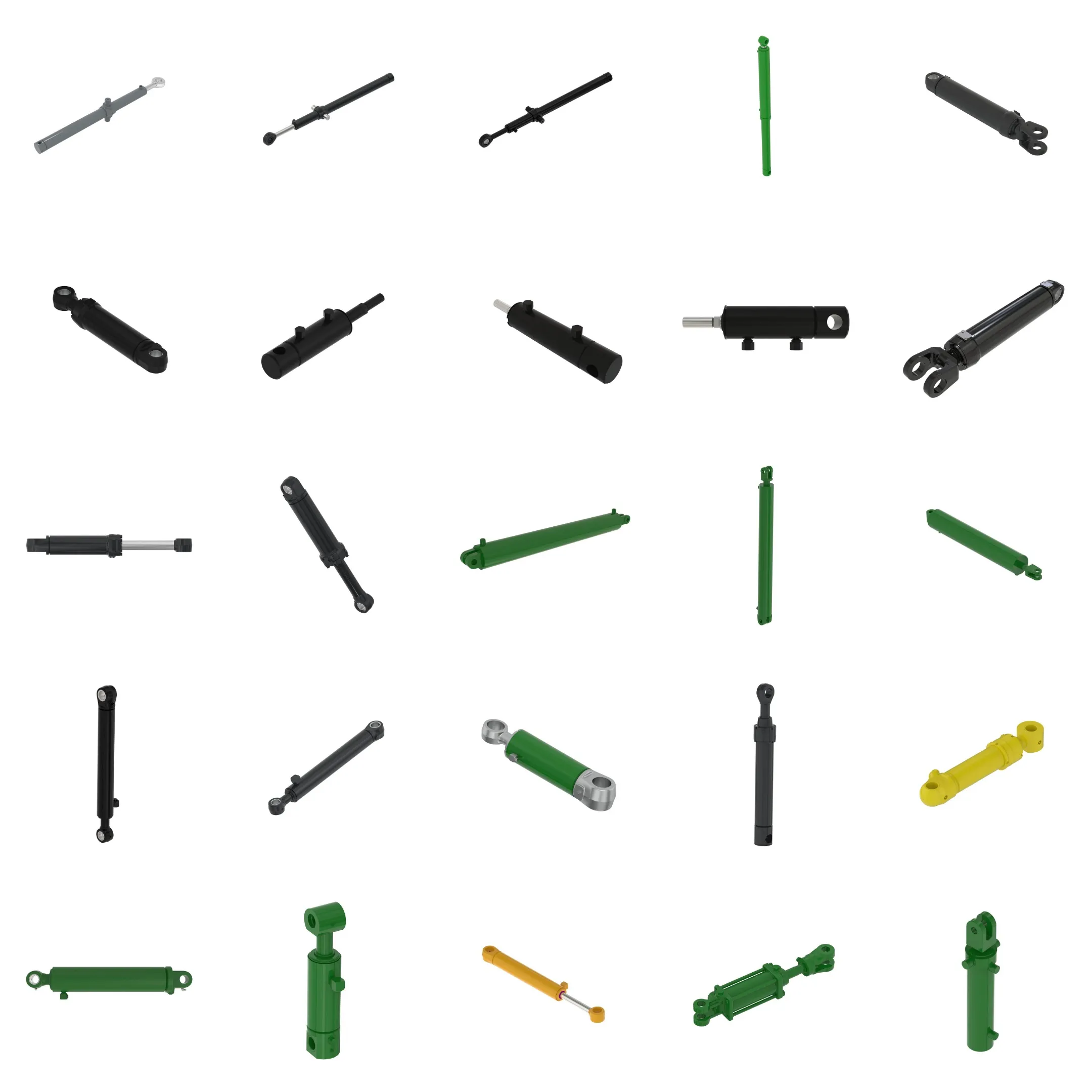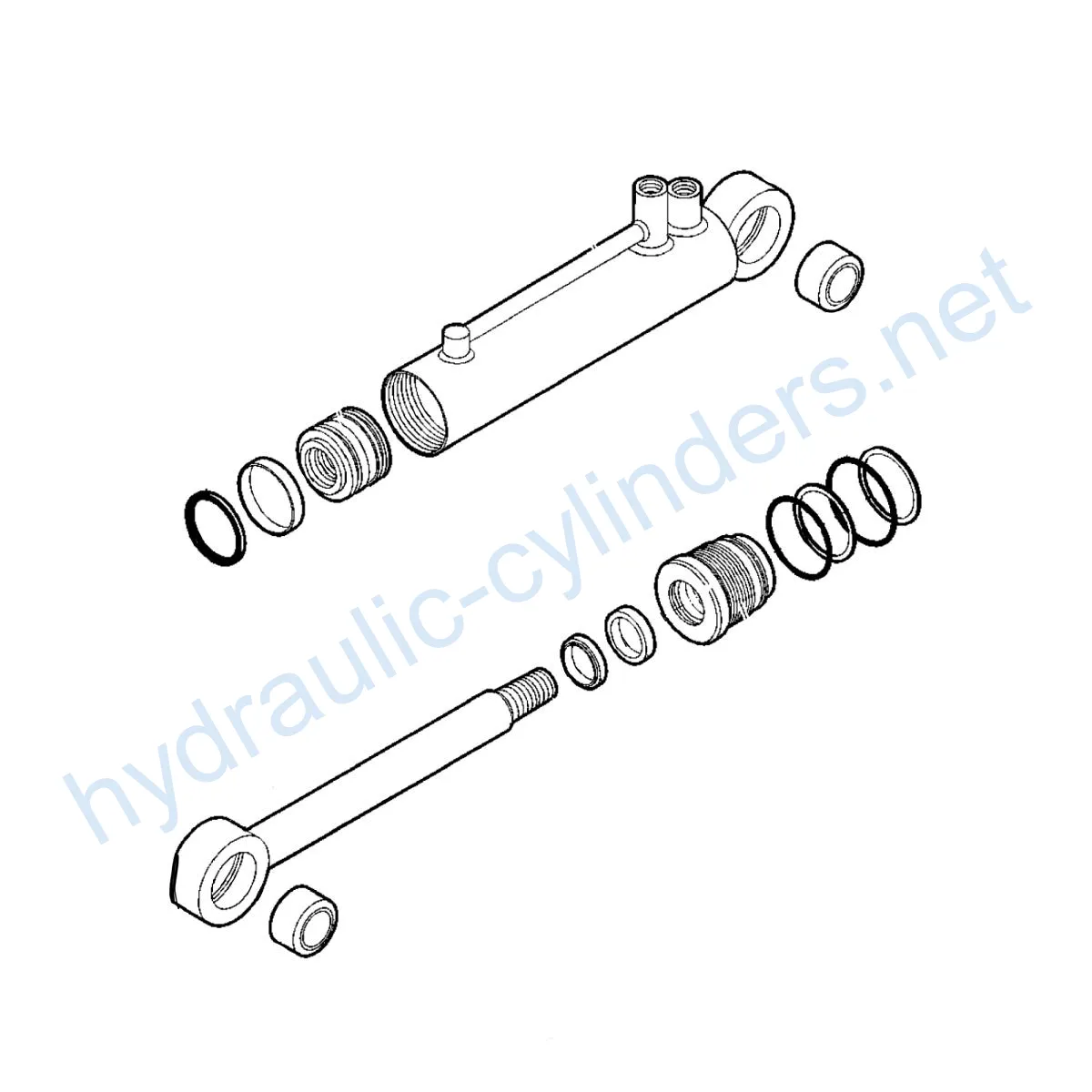Replacement Of F063645 Hydraulic Cylinder
Fiind unul dintre producătorii, furnizorii și exportatorii de cilindri hidraulici, oferim cilindri hidraulici și multe alte produse.
Vă rugăm să luați legătura cu noi pentru detalii.
Mail:sales@hydraulic-cylinders.net
Producător, furnizor, exportator de cilindri hidraulici.
Replacement Of F063645 Hydraulic Cylinder
Product Introduction
The Replacement Of F063645 Hydraulic Cylinder is a hydraulic component used in various industrial equipment. It serves the purpose of providing the necessary force for different mechanical operations.
Specifications and Models
Specifications:
- Weight: 5.782 lb
- Height: 1.65 in
- Width: 3.65 in
- Length: 13.6 in
Models:
[Insert the specific models here]
Product Features
- Improved Equipment Performance: Replacing damaged or worn hydraulic cylinders can restore the normal operation capability of the equipment, ensuring its performance in various applications.
- Enhanced Safety: Regularly replacing hydraulic cylinders can reduce safety hazards caused by cylinder failures, ensuring the safety of operators and equipment.
- Overload Protection: New cylinder designs typically incorporate better overload protection mechanisms, enhancing safety.
- Quick Installation: Modern hydraulic cylinders are designed with easy installation and replacement in mind, reducing downtime.
- Standardized Components: Many hydraulic cylinders are standardized products, making it easier to obtain replacement parts in the market.
Applications
- Excavators: Hydraulic cylinders on the arms or buckets of excavators may get damaged due to prolonged use or overloading, requiring replacement for normal operation.
- Cranes: Hydraulic cylinders on crane booms are prone to wear during frequent lifting and lowering processes, necessitating regular replacement for safety.
- Tractors: Hydraulic cylinders on front-end loaders of tractors may experience leaks or performance degradation during constant lifting and tilting operations, requiring replacement.
- Harvesters: The hydraulic system undergoes high pressure during the harvesting process, and cylinders may suffer from fatigue, requiring timely replacement to maintain work efficiency.
- Automated Production Lines: Hydraulic cylinders are used to control robotic arms and other automated equipment. Cylinder failures can affect production efficiency and should be replaced immediately.
- Die Casting Machines: Hydraulic cylinders in die casting machines may experience performance degradation in high-pressure and high-temperature environments. Regular replacement ensures product quality.
- Mining Equipment: Hydraulic cylinders are used in mining equipment for lifting and moving heavy loads. Regular inspections and replacements are necessary to avoid equipment failures in harsh working conditions.
- Bulldozers: Hydraulic cylinder wear on bulldozer blades can lead to decreased pushing capability and should be replaced promptly to maintain operational efficiency.
Maintenance Tasks
- Regular Inspection: It is important to conduct routine inspections to identify any signs of damage or wear on the hydraulic cylinder.
- Proper Lubrication: Adequate lubrication ensures smooth operation and prolongs the lifespan of the cylinder. Appropriate lubricants should be used as recommended.
- Seal Replacement and Calibration Check: Seals should be replaced when worn or damaged, and calibration checks should be performed to maintain optimal performance.
Safety Considerations and Environmental Factors
When using hydraulic cylinders, it is crucial to follow safety measures to prevent accidents and ensure operator well-being. Additionally, considering environmental factors in the selection and use of cylinders promotes sustainability and reduces ecological impact.
Troubleshooting and Common Issues
Here are some common issues that may arise with hydraulic cylinders:
- Leakage: Insufficient sealing or damaged seals can lead to hydraulic fluid leakage.
- Slow Operation: Reduced speed or response time may indicate a problem with the cylinder’s internal components.
- Noise: Unusual noises during operation may indicate issues with the cylinder’s components or lubrication.
- Uneven Movement: Inconsistent movement or deviations from the intended path may indicate misalignment or internal damage.
Tips for Troubleshooting and Problem Resolution
To effectively diagnose and resolve hydraulic cylinder problems, consider the following tips:
- Understand the symptoms and possible causes of the issue.
- Refer to the manufacturer’s documentation for troubleshooting guidance.
- Follow proper maintenance procedures, including regular inspections and lubrication.
- Seek professional assistance if necessary.
- Implement preventive measures to minimize potential issues, such as regular maintenance and adherence to operating guidelines.

Product Design Considerations and Selection Criteria
When selecting hydraulic cylinders, certain design considerations and criteria should be taken into account:
- Load-Bearing Capacity: Ensure the cylinder can handle the required load without compromising performance or safety.
- Sealing: Optimal sealing capabilities are essential for preventing leakage and maintaining efficiency.
- Durability: Choose cylinders constructed with durable materials to withstand demanding operating conditions and extend the product’s lifespan.
- Safety: Consider safety features such as overload protection mechanisms to protect equipment and operators.
- Maintainability: Easy access to components and the availability of spare parts contribute to efficient maintenance and repair processes.
Sealing and Lubrication
Hydraulic cylinders utilize various sealing components, such as piston seals and rod seals, made of wear-resistant materials like polyurethane and nitrile rubber. The cylinder’s body and threaded ends undergo precise surface treatments to enhance wear resistance. Regular lubrication with the appropriate hydraulic oil is essential for smooth operation and longevity.
Preventive Maintenance Measures
Implement the following preventive maintenance measures:
- Perform regular inspections to identify potential issues before they escalate.
- Ensure proper installation, lubrication, and adjustment for optimal performance.
- Provide guidance for aligning the cylinder correctly during installation.
- Recommend the use of suitable mounting brackets for securing the cylinder.
- Provide recommended inspection, repair, and replacement procedures.
- Offer replacement parts and rebuilding services to extend the lifespan of the hydraulic cylinder.
- Share tips and techniques to enhance the longevity of the product.

About Our Company
We are a manufacturer specializing in replacement hydraulic cylinders. Our company offers a wide range of products and has become one of the leading manufacturers and wholesale distributors in the domestic and international markets.
Our Strengths:
- Professionalism: Our team consists of experienced experts in the field of hydraulic cylinders.
- International Certifications: We hold relevant certifications that demonstrate the quality and reliability of our products.
Faceți un tur al fabricii noastre VR:
Faceți un tur al fabricii noastre VR cu următoarele
Cilindru hidraulic Aplicație:


